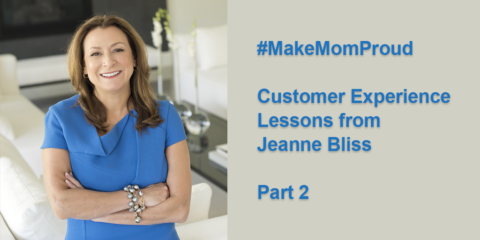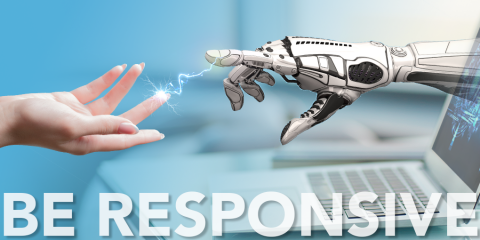Search
Contact Us
It’s Not an Option – It’s Expected (Blog Series)
Register for our upcoming webinar “When, How and Why Customers Self-Help” with Steve Morrell, Managing Director and Principal Analyst of Contact Babel and John Cray, VP, Product Management, Enghouse Interactive.
Blog #1 of 3: Into the Vortex “Cross Channel is the New Omni-Channel”
For many businesses, self-service is becoming a key factor for success. But, innovative and success-seeking organizations strive to be the exception – they seek to go further, faster. They succeed by developing better experiences at every organizational touchpoint they can: for their customers, partners, suppliers, and vendors.
Looking at the customer journey, it often starts on a bad note. The customer is calling due to an issue, problem or, a need for something… all the while thinking that they would rather be doing something else…
In light of this, the onus is on the organization to make the process as pleasant and as positive as possible.
Choices Expected. Choices Offered.
Customers now also expect to have choices….and these choices usually vary depending on demographics. Older customers generally skew to using voice-based services, while younger customers readily use automation. The types of products and services your organization offers also influences the choices customer make to engage with your organization. Consumers of higher-end products are more hands-on and want the most comprehensive automated tools possible, while consumers of mid-range to lower-end products generally prefer voice-based services for support.
The exception to this rule is when dealing with highly sensitive and personal situations, where all callers generally prefer human interaction for their empathy, ongoing reassurance and the confirmations that are regularly part of such calls.
With the growing use of smart devices and tablets customers, regardless of their demographic profile, will generally shift to automated tools for more support services, no matter their age.
Into the Vortex
Looking at the customer journey holistically, the customer’s first point of contact is the most important.
That includes what information you provide to your customers. Your website and customer support assets should be treated as your first touchpoint, where you make your first impression. It defines your organization. Customers expect to be able to find the information they need to answer their product/service questions there. Your FAQ documentation should be as detailed as needed to help customers resolve their issues without needing to contact you. If it isn’t complete, they’ll reach out for support.
If by voice, the greeting and all messaging including prompts should be clear, concise, consistent and professional… throughout the customer journey. This is where the positive experience starts. Proper messaging is invaluable in shortening the self-service journey. Optimizing choices, defining them clearly, ensuring all possible requirements are met with a minimal number of prompts and choices, are the hallmarks of a comprehensive understanding of your services/products and how your customers use them.
And yet, Customers Are Digital, increasingly choosing to use digital channels, either as a complement to voice or as their sole ‘go to’ communications option – and even sometimes use both simultaneously! This cross-channel approach has also affected their self-service expectations – if using a cross-channel approach, customers expect that they will be dealt with even faster as one of the channels they are using should be responded to immediately.
Expectations are on the rise, maybe even unreasonably so.
Voice? Digital? Cross-Channel?
As an initial starting point, once a customer has chosen their preferred communications channel the organization should be capable of shifting the support dialogue from one channel to another, if and when the customer chooses. And, without needing to re-authenticate or provide a status of what they have already conveyed to resolve their issue. A proper CRM integration will ensure that the customer’s file is updated in real-time, which ensures that the transactional history is readily available should any other channel be used or should the call is escalated to a live agent. By leveraging web-chat, SMS, social media or video, customers determine what is best for them at any moment in time, for whatever reason they choose. To force them to choose one singular approach, will not be acceptable, and over time, they will ultimately choose to engage with organizations that provide the flexibility they expect.
Engage and Authenticate with Technology, as part of the customer journey. Preferred customers should be authenticated automatically and with no additional customer involvement. Passive biometrics (using voiceprints, tone, and speaking cadence or keystroke patterns) is the best possible approach for the majority of uses, outside of Financial Services and Healthcare – which will want to use multi-factor authentication to limit their liability. New customers should also be given the choice of how they want to be authenticated – clearly and specifically at the beginning of the new customer registration process.
The days of asking questions or just requesting passwords are rapidly fading.
Throughout the course of this blog series, we’ll explore how by fully integrating the Contact Center with the most important self-service applications, organizations can significantly improve the speed and ways they engage with their customers, while also improving the overall experience – delivering what the customer needs or wants with industry-leading efficiency.

Watch for our next blog in this series, coming September 3rd:
What Do Customers Want? What Do Customers Need?
Help make sure your organization delivers the service experience that exceeds customer expectations. Doing so can transform your contact center from a cost-center into a revenue generator.
Published In
AI Enghouse Interactive Educates digital transformation Webinar Contact Center Service Provider customer support webchat CCaaS multi-tenant call handling compliance Partners Integration & Optimization Service Provider Cloud-Based Contact Center Contact Center Solutions MediaVoice Microsoft Enghouse Interactive IVR/Self-Service call recording voice of the customer customer service resources contact center optimization Contact Center Customer Experience Omni-Channel VideoThank you!
You have successfully subscribed to our newsletter.
Sign up here to watch your selected video as well as gain access to the other videos listed here
Sign up here to watch your selected video
Sign up here to watch the videos as well access to more Tips 'N' Tricks videos
Get your free download


